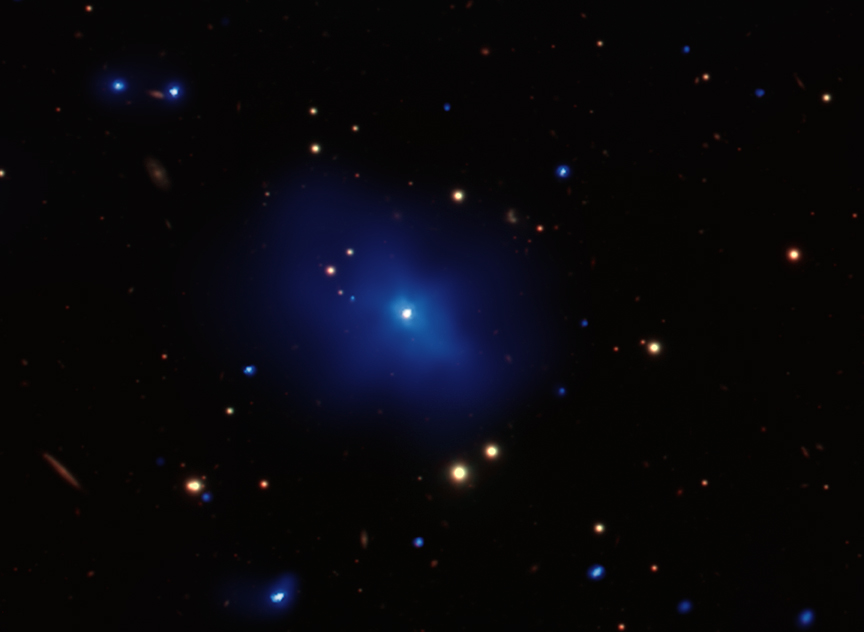
 Credit:
Credit:
Far Away Cooling
The Universe is made up of clusters of galaxies, and clusters of clusters. These giant objects, the largest self-gravitating bodies that exist, are the atoms of the Universe. Understanding how these objects form and evolve is a high priority astronomical goal. X-ray observatories like the Chandra X-ray Telescope play an important role since clusters of galaxies contain huge amounts of hot, X-ray emitting gas. The image above is a composite Chandra and optical image (from the Gemini Observatory) of the galaxy 3C186. In the optical image this galaxy appears as a single point of light near the center of the image. The Chandra X-ray image reveals more than meets the optical eye. Chandra detects a strong extended source of X-rays around 3C 186, identifying 3C 186 as the central galaxy of a galaxy cluster. 3C 186 is 8 billion light years away, making this one of the most distant clusters yet identified. More importantly, the Chandra data show that the emission from the center of the cluster is cooler than the emission from the outskirts, a so-called "cooling flow". 3C 186, and its associated cluster, is the most distant cooling flow cluster known.
Published: November 1, 2010
<
HEA Dictionary ● Archive
● Search HEAPOW
● Other Languages
● HEAPOW on Facebook
● Download all Images
● Education ● HEAD
>

Each week the HEASARC
brings you new, exciting and beautiful images from X-ray and Gamma ray
astronomy. Check back each week and be sure to check out the HEAPOW archive!
Page Author: Dr. Michael F. Corcoran
Last modified Monday, 26-Feb-2024 17:33:46 EST


